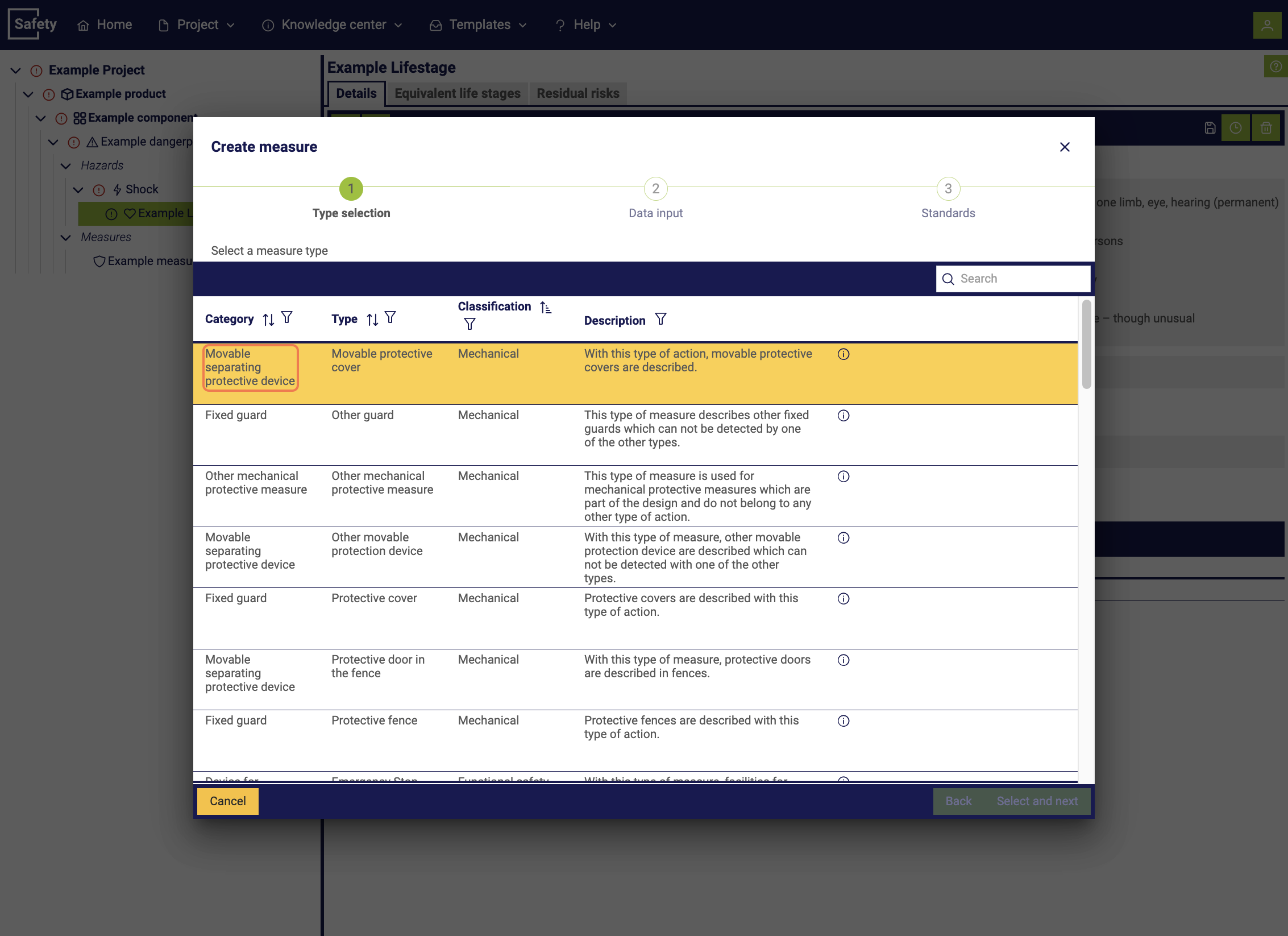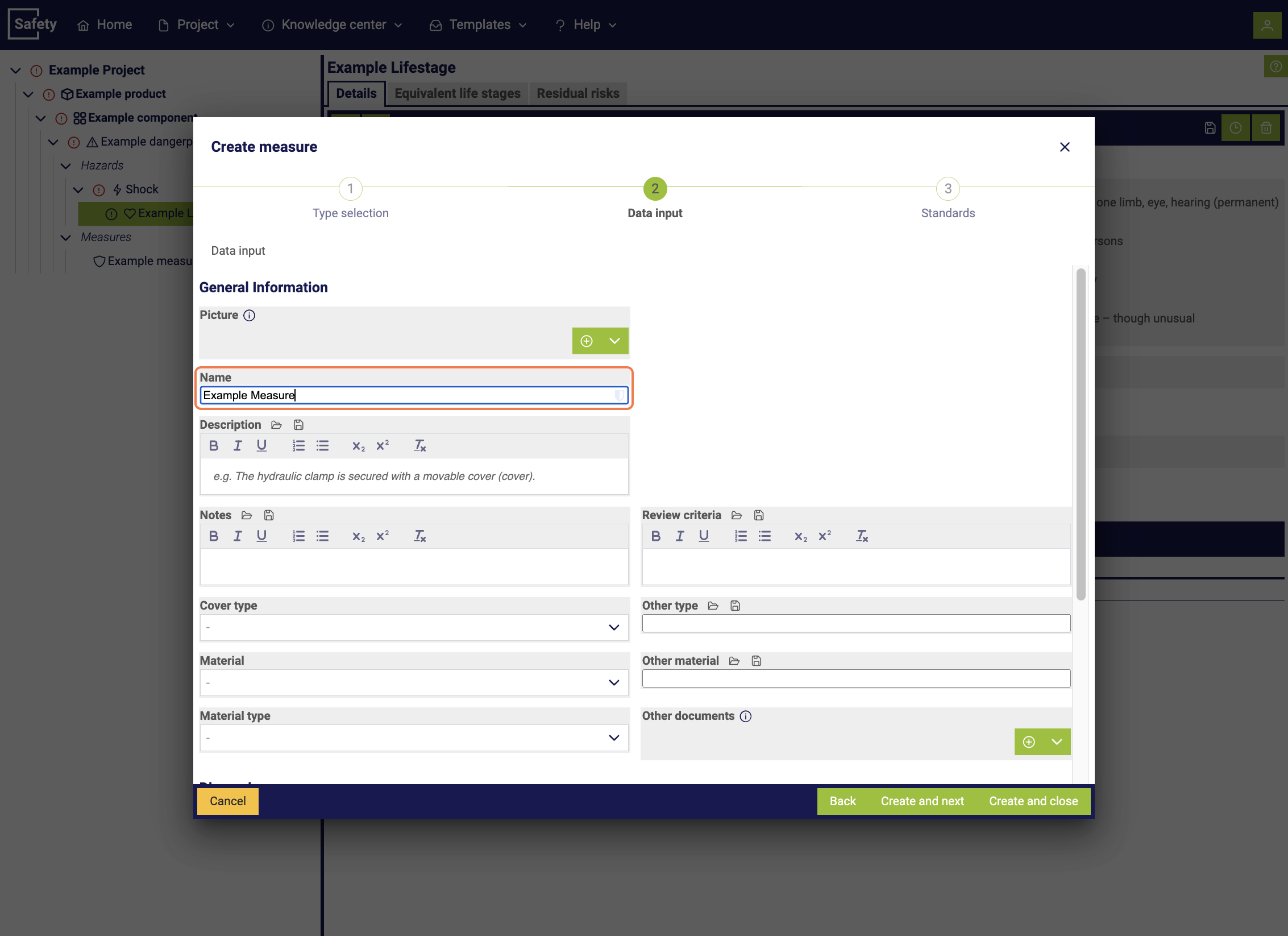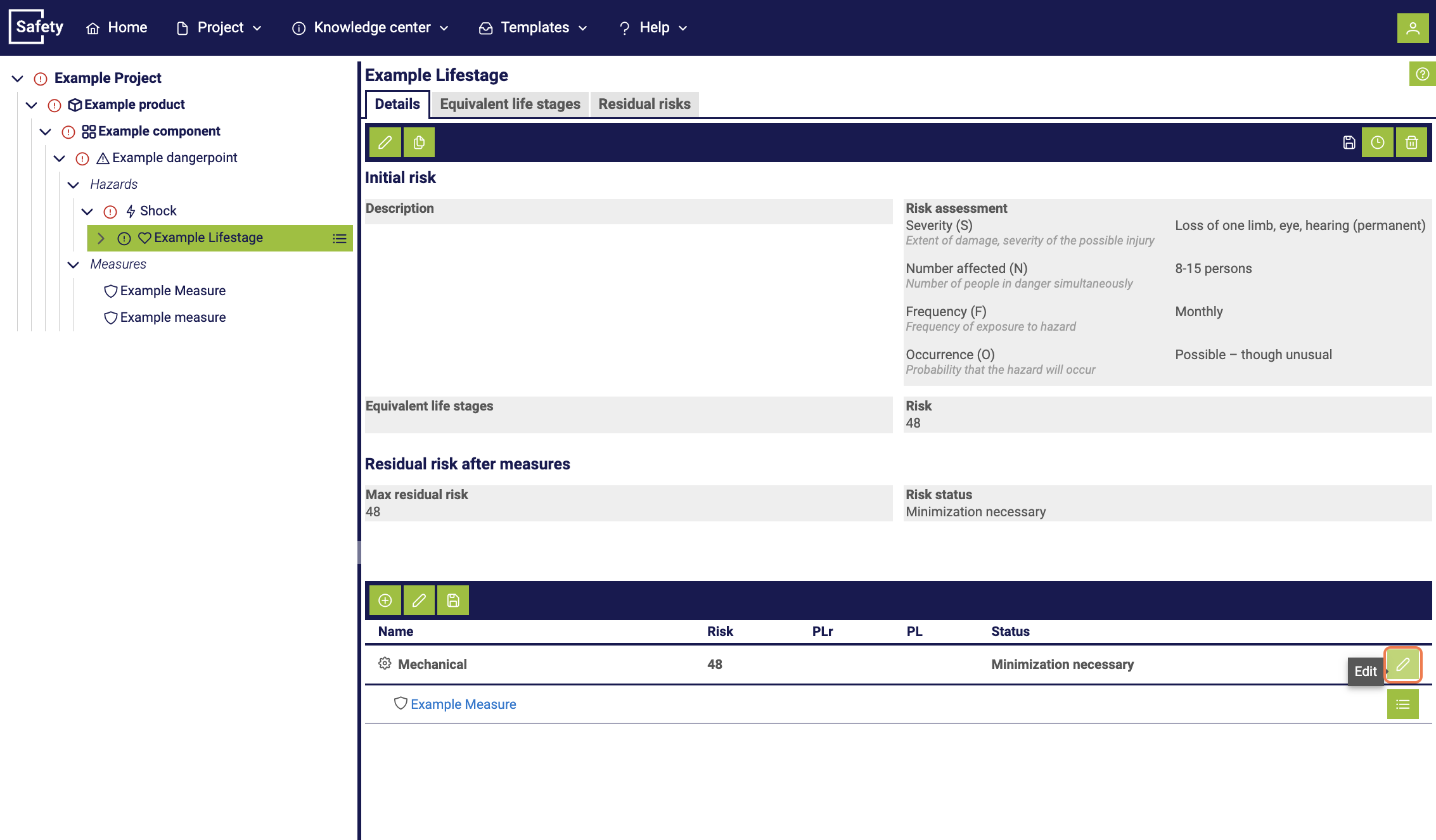Determine measures
To minimize the risk of a hazard, it is necessary to implement measures against the initial risk. By implementing these measures, the risk is reduced according to the evaluation.
The residual risk of a life stage refers to the remaining risk that exists after the implementation of risk reduction measures or checks in this phase of the life cycle of a product or installation. It represents the risk that still exists despite the measures taken and is considered acceptable or sufficiently minimized. The residual risk is carefully evaluated to ensure that it is at an acceptable level and that the safety and health of individuals, as well as the environment, are adequately protected.

Within the same window and within a specific life stage, there is the possibility to start the process of adding a measure by navigating to the bottom area of the window.

In the subsequent step, a window opens where we can decide whether to create a new measure or use an existing template. After that, a new measure is created to continue the process.

When creating a measure, first select the corresponding measure type. Depending on the selected measure type, there are different requirements regarding the information to be maintained within the measure.

Next, assign a name to the measure and possibly assign standards to it.

Finally, evaluate the measure by clicking on the editing symbol.

In the final window, evaluate the measure similarly to the initial risk and assign an additional risk status. Then, on the left side, the color of the symbols indicates whether further minimization is required or whether the risk has already been sufficiently minimized.